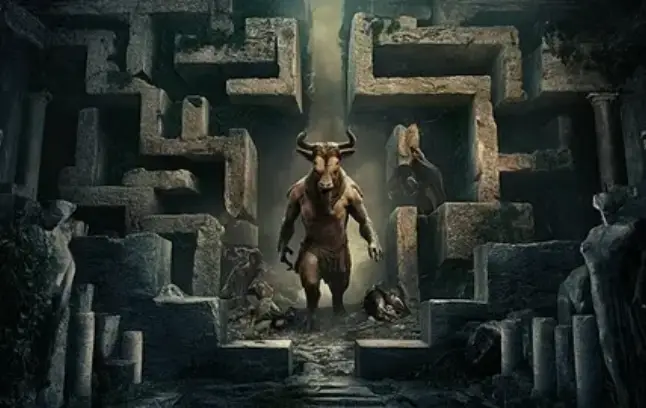
One of the most captivating elements of Marianne Carpenter’s Minotaur is its setting: a dangerous and uncharted alien planet that serves as both a battleground and a metaphor for the characters’ struggles. This hostile world is not just a backdrop; it’s a dynamic force that shapes the story, driving the characters to their limits while immersing readers in an environment as vivid as it is terrifying. In this blog, we’ll delve into the world-building of Minotaur and explore what makes this alien planet unforgettable.
The story begins aboard the prison ship Wiscasset, where a chaotic riot ends in a catastrophic crash landing on an uncharted planet. From the moment Julie, the prison guard, and 1622, the enigmatic prisoner, set foot on the planet’s surface, the setting becomes an active participant in their journey. Carpenter spares no detail in painting a picture of a world that feels both alien and eerily familiar, drawing readers into a landscape that is as breathtaking as it is lethal.
The planet’s surface is a mosaic of peril. Towering cliffs, labyrinthine cave systems, and dense forests teem with predatory creatures, making every step a gamble. Carpenter’s descriptions of the landscape are richly textured, evoking a visceral sense of danger. For example, the labyrinth, central to the novel’s plot, is a sprawling network of tunnels and caverns that disorient and isolate the characters. Here, Carpenter masterfully uses the environment to amplify the story’s tension. The labyrinth is not just a physical challenge but a psychological one, forcing Julie and 1622 to confront their fears and push their endurance to the brink.
Adding to the planet’s dangers are its inhabitants. Savage tribes of cannibals lurk in the shadows, their presence adding an element of horror to the story. These tribal adversaries are not just obstacles; they represent the raw, primal nature of the planet itself. Carpenter uses them to underscore the theme of survival at any cost, contrasting their brutality with the protagonists’ more nuanced moral struggles. The titular Minotaur, a towering and mythical beast, adds yet another layer of menace. Its presence in the labyrinth not only heightens the stakes but also serves as a metaphor for the character’s inner demons and the existential threats they face.
Beyond its physical and immediate threats, the planet in Minotaur also hints at a larger mystery. Strange remnants of past civilizations, cryptic symbols, and otherworldly phenomena suggest that the planet has a history of its own; one that Julie and 1622 only begin to glimpse. Carpenter weaves these elements seamlessly into the narrative, creating a sense of depth that makes the planet feel alive. This mystery adds intrigue and keeps readers guessing about what secrets might still be hidden beneath the surface.
What makes the planet truly compelling, however, is its role as a crucible for the characters’ growth. In many ways, the planet mirrors the internal journeys of Julie and 1622. Its challenges strip away their preconceived notions and force them to adapt, collaborate, and evolve. The planet is a place where survival requires not just physical strength but also emotional resilience and moral compromise. Through their interactions with this unforgiving environment, the characters discover new facets of themselves and each other.
Carpenter’s world-building is further enriched by her attention to detail. From the texture of the planet’s soil to the sounds of its alien wildlife, every element contributes to a fully immersive experience. Her descriptions are not just vivid but also purposeful, drawing readers into the characters’ perspective. For example, the oppressive darkness of the labyrinth is more than just a visual cue; it’s a reflection of the characters’ uncertainty and fear. Similarly, the planet’s weather, from torrential rains to blistering heat, serves as a constant reminder of the characters’ vulnerability.
Thematically, the planet raises profound questions about humanity’s place in the universe. It’s untamed wilderness and mysterious relics suggest a world that exists beyond human understanding, indifferent to their struggles. This sense of cosmic insignificance adds a layer of existential tension to the story, reminding readers of the fragility of human life. Yet, it is precisely in this harsh environment that Julie and 1622 find moments of connection, proving that even in the most alien of landscapes, the human spirit can endure.
The world of Minotaur is more than just a setting; it’s a character in its own right, influencing the story at every turn. Carpenter’s ability to create such a richly imagined and dynamic environment is one of the novel’s greatest strengths. It’s a world that feels tangible and alive, a place where every shadow hides a threat and every step could lead to discovery or destruction.
In conclusion, the alien planet in Minotaur is a masterpiece of world-building. Its beauty and danger are intertwined, creating a setting that challenges and transforms the characters while immersing readers in its mysteries. Carpenter’s vivid descriptions and thoughtful details make the planet an unforgettable part of the story, leaving readers eager to explore every corner of its perilous expanse.